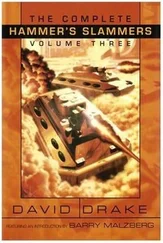5
Under pressure of public opinion, and after a series of heavy editorials, the Police Department has decided to set up a special section to deal with the assaults. Called the Incident Squad, it is under the direction of Senior Detective William Pierce, who has two full-time assistants. One of them, following on a petition to the Department from local women's groups, is a woman.
Senior Inspector Pierce is a widower, aged thirty-nine, with two small boys.
6
It might be anyone.
A fresh-faced kid running round an oval after dark stands panting for a bit with his hands on his hips, then dips his head like a big wading-bird to ease the muscles of his neck. After a brief burst of running on the spot, he resumes his training, alternating stretches of steady jogging with fifty-metre sprints, a lone figure on the darkening oval, a speck of white, moving fast, moving slower, moving fast again against a field of green. Minutes later he is dropping on all fours under a lighted window.
To watch.
At last, slipping out of his gym-shoes, unzipping his track-suit, easing the elastic of his shorts, he stands for a moment in the summer dark — still, poised as if before a barrier he must clear, preparing himself inwardly for the effort it will take, raising himself lightly on the balls of his feet. Then he moves.
Or a man rolls to one side of the bed where his wife is turned heavily away and sets his footsoles on the floor; pushes himself upright, slowly, lest the bed creak; stands, creeps to the hallway. Having learned the catlike quietness of his movements, and also perhaps his need for violence, in this very house and from the woman he leaves dreaming in the bed behind him. He pauses outside the room where his children sleep and listens a moment to their breathing. Then goes on.
It might be either of these.
Or a painter's apprentice already naked under his white overalls (who sets his lunch-tin down very carefully beside a garden tap) or a grease monkey naked under his blue ones.
Or a man in shorts and singlet, slap-footed in thongs, who has been walking a muzzled Greyhound. He ties it now to a tree, flicks his lighted butt into a camellia bush, and smiling, eases up a window. Already in his imagination he is halfway in. Behind him the dog stands tense, quivering, then as the garden sounds grow familiar settles to wait.
It might be any of these.
It might be anyone.
7
The Incident Squad had issued an identikit picture, assembled from the evidence of nearly seventy victims.
Each victim is presented with the outline of a face and a booklet containing page by page a variety of features; as for example, eyes close set or far apart, small pig-eyes, gimlet slits, round eyes frank and open, eyes that bulge a little, eyes that slant upwards at the corner, eyes that slant down, eyes with heavy lids, flat lids, no lids at all; eyebrows far apart or joined at the bridge of the nose, arched, pointed, straight, tilted up or down; eyebrows thick, thin, tufted etc.; and so on for the various shapes of nose, mouth, chin, ears, the various colours and kinds of hair. When each of these features has been considered, and the chosen eyes, eyebrows, nose, mouth, hair, affixed to the plastic outline, a face takes shape and the prowler begins slowly to emerge out of the victim's memory, out of the fog at the back of her head. Feature by feature he comes into focus; and so vividly in some cases that the victim has immediately gone into shock at conjuring up, once more, the image of her assailant.
So then: seventy men re-created out of the dark experience of seventy different women. These seventy images are then superimposed one upon the other to discover what is common to them.
The results are puzzling.
Three separate types emerge, and have now been promulgated as possible likenesses of the prowler.
Three? Can the prowler then change his form? Is he perhaps an expert at disguising himself?
For the fact is that some of the features the women are most insistent upon — as for example black hair closely cropped and a zapata moustache — cannot be reconciled with others, long blond hair like a surfie's, thin pale beard, etc. The various images have been further sorted and amalgamated, and so we have the prowler's three faces, one young, one middle-aged, one old, rather like that mysterious portrait attributed to Titian in which the three heads of youth, maturity, and old age rise from a single trunk and look in three different directions— a whole lifespan, as it were, telescoped into the space of a single frame. In Titian's case the triple portrait has a pendant, a reflection, in which the three human heads are replaced by those of animals: lion, fox, and dog.
But to return to the identikit pictures. What seems strangest is that when the sharply detailed memories of these women have been laid one over the other to produce a composite picture, the face that emerges is both immediately recognizable (because typical) and at the same time quite useless as a key to identification. The three faces are clichs. They look like everyone and no-one. Blondish baby-faced youth, lean, shy-looking, with the beginnings of a moustache — student, bank clerk, apprentice plumber, railway porter. Clean-cut young married with short back and sides — an architect perhaps, or a schoolteacher or swimming-pool contractor, someone in advertising or the Town Clerk's office. Older man, distinguished-looking but with a hint of looseness about the mouth; might be a travelling salesman, a green-keeper, or a professional soldier recently cashiered or the owner of a small grocery business.
But these images will get us nowhere. Half the male population of the suburb, of the city even, might move without difficulty into these familiar outlines.
What does it mean?
Are there, quite simply, three prowlers of different ages? Or are the women's memories in some way inaccurate — or not so much inaccurate as so creative, so deeply stimulated, that they have added to their experience and remade it, so that what they reproduce is not what they saw at the moment of the attack (some of them can have seen very little) but what sprang into their minds as a visual equivalent of what their hands encountered in darkness, rough cloth, metal, the coarseness of hair, of what forced itself into their nostrils as an unforgettable but unidentifiable odour, and into their ears as a series of obscene monosyllables or grunts or beery endearments. These details do not interest the police; they can do nothing with them.
“His breath on my neck" — what use is that?
“His body was so hot — like an oven.”
“There was a smell of mice.”
“Salt. His hand tasted of salt.”
The visual features of the identity-kit picture are attempts to render, in another language, what the women did not see but sensed, or heard, or smelled, and the translations are clichs, they derive from the common pool of their reading or from the movies. What the identikit pictures provide us with is not the composite picture of a prowler— some citizen engaged at this moment in delivering bread or sealing envelopes in an office or teaching his kids to box with a bag under the house — but a picture of the man these women fear most, or know best, or most long for, or have dreamed of once on some remote occasion and forgotten.
It is no coincidence that if we treat these pictures as caricatures, the man who most resembles the victim's assailant is often a member of her own family: a father, an uncle, a brother-in-law, a son.
8
A burglary takes place. Nothing much is stolen. But a man, turning afterwards to the drawer where his handkerchiefs are kept, discovers that one of them has been used. He stares at the patch of quite ordinary wetness and feels panic. Not disgust but panic. As if his house could never be his own again; as if it stood roofless and could never again offer him refuge or protection because there is no such thing in the world; as if he himself stood naked. Whimpering with shame he tumbles the handkerchiefs out on to the floor and removes them with a stick.
Читать дальше












